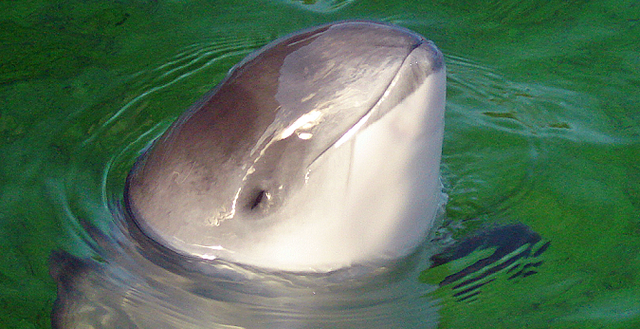
Fågelinfluensa hos tumlare för första gången
För första gången någonsin har fågelinfluensa bekräftats hos en tumlare, uppger Statens veterinärmedicinska anstalt (SVA) i ett pressmeddelande.
Tumlaren hittades strandad i västgötska Tanums kommun i juni. Privatpersoner försökte hjälpa den tillbaka i vattnet, men på grund av utmattning trasslade den in sig i sjögräs och dog samma kväll.
SVA:s obduktion visade på fågelinfluensavirus i flera organ, som orsakat hjärn- och hjärnhinneinflammation.
”Sannolikt är att tumlaren på något sätt kommit i kontakt med smittade fåglar”, säger Elina Thorsson, viltveterinär vid SVA, enligt pressmeddelandet.
bakgrund
H5N1
Wikipedia (en)
Influenza A virus subtype H5N1 (A/H5N1) is a subtype of the influenza A virus which can cause illness in humans and many other animal species. A bird-adapted strain of H5N1, called HPAI A(H5N1) for highly pathogenic avian influenza virus of type A of subtype H5N1, is the highly pathogenic causative agent of H5N1 flu, commonly known as avian influenza ("bird flu"). It is enzootic (maintained in the population) in many bird populations, especially in Southeast Asia. One strain of HPAI A(H5N1) is spreading globally after first appearing in Asia. It is epizootic (an epidemic in nonhumans) and panzootic (affecting animals of many species, especially over a wide area), killing tens of millions of birds and spurring the culling of hundreds of millions of others to stem its spread. Many references to "bird flu" and H5N1 in the popular media refer to this strain.According to the World Health Organization (WHO) and the United Nations Food and Agriculture Organization, H5N1 pathogenicity is gradually continuing to rise in endemic areas, but the avian influenza disease situation in farmed birds is being held in check by vaccination, and there is "no evidence of sustained human-to-human transmission" of the virus. Eleven outbreaks of H5N1 were reported worldwide in June 2008, in five countries (China, Egypt, Indonesia, Pakistan and Vietnam) compared to 65 outbreaks in June 2006, and 55 in June 2007. The global HPAI situation significantly improved in the first half of 2008, but the FAO reports that imperfect disease surveillance systems mean that occurrence of the virus remains underestimated and underreported. As of May 2020, the WHO reported a total of 861 confirmed human cases which resulted in the deaths of 455 people since 2003.Several H5N1 vaccines have been developed and approved, and stockpiled by a number of countries, including the United States (in its National Stockpile), Britain, France, Canada, and Australia, for use in an emergency.Research has shown that a highly contagious strain of H5N1, one that might allow airborne transmission between mammals, can be reached in only a few mutations, raising concerns about a pandemic and bioterrorism.
Omni är politiskt obundna och oberoende. Vi strävar efter att ge fler perspektiv på nyheterna. Har du frågor eller synpunkter kring vår rapportering? Kontakta redaktionen